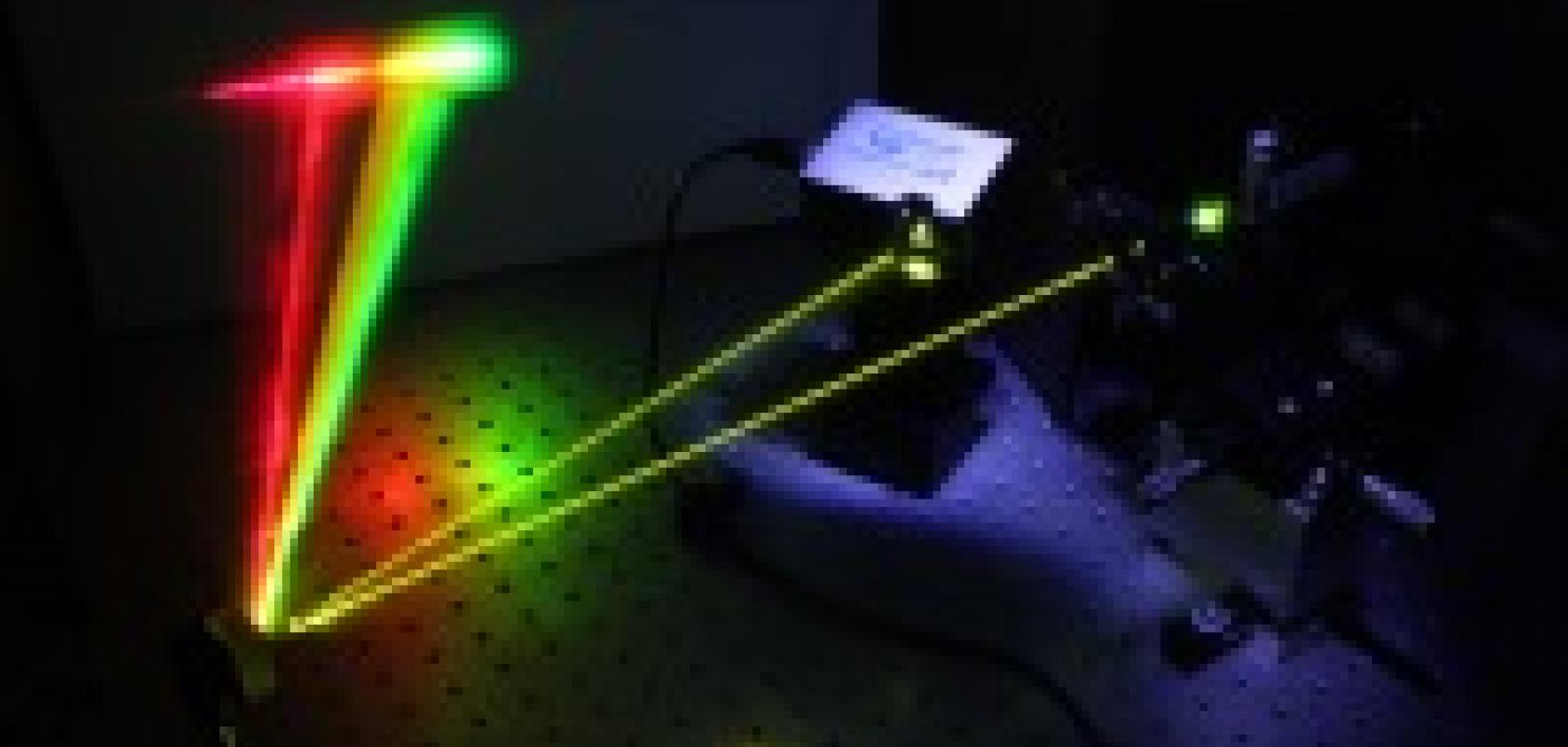Miniature Spectrometers for Narrowband Laser Characterization

Keywords
- High resolution
- Laser power
- Spectral shape
Technique
- Emission spectroscopy
- Absolute power measurement
Applications
- Laser characterization
- Laser power output
- Quality control
Used everywhere from bar code scanners to sophisticated single-molecule microscopes, lasers are powerful and cost-effective light sources for applications spanning basic research to consumer entertainment. Characterization of wavelength and power is an important part of working with these sources, and compact, plug-and-play spectrometers are an excellent tool to do so.
Background
Miniature spectrometers can be used to characterize laser output, either as part of an internal laser feedback loop or externally. Ocean Optics modular spectrometers can be configured for sub-nanometer optical resolution (FWHM) performance in the UV-Vis (200-1100 nm) and high resolution in the NIR (800-2500 nm), with fast response times and triggering functions for synchronizing laser events to spectral acquisition.
Combined Wavelength and Power Monitoring
Laser diodes are prone to wavelength and power output fluctuations due to temperature variations, often requiring feedback loops and stabilization. The Ocean Optics STS microspectrometer is a compact monitoring solution that fits easily into a laser system or sub-assembly. When equipped with a 10 µm slit, the STS is capable of resolving laser output with resolution close to 1.0 nm (FWHM), and can accommodate both fiber and free-space coupling.
In the example spectra (Figure 1), a collimated 532 nm laser diode was characterized using a radiometrically calibrated STS-VIS (~1.5 nm FWHM resolution). The laser beam was transmitted through a beamsplitter and the reflected beam (approximately 30%) was collected by an integrating sphere; the STS-VIS measured the laser’s absolute spectral radiant flux and integrated power.

Figure 1. The small-footprint, high performance STS microspectrometer is an excellent option for integration into a laser source sub-assembly.
By integrating the spectral radiant flux over the region from 500-560 nm, and by using the Energy, Power and Photons feature in OceanView spectroscopy software, we calculated a total integrated laser power of 521 µW.
High Resolution Spectral Measurement
When more than just a center wavelength is needed, a high resolution spectrometer may be appropriate. Our HR spectrometers are offered with a variety of gratings and with two high-density CCD array detectors, allowing you to custom-configure a system for your specific wavelength range. This allows a single spectrometer to measure multiple characteristics of the laser including peak location, FWHM, integrated area under the peak and other parameters.

Figure 2. HR series spectrometers work well for laser applications with sub-nanometer optical resolution (FWHM) requirements.
Monitoring Near-IR lasers
Laser applications are moving increasingly into the NIR, including pharmaceutical development, stand-off explosives detection, and other defense and security applications.
To demonstrate the capability of Ocean Optics spectrometers for the characterization of NIR lasers, we measured the output of a wavelength-stabilized 1064 nm laser using a NIRQuest spectrometer. Configured with a 10 µm slit and a 600 line/mm grating, this custom configuration delivered 0.25-0.46 nm resolution (FWHM) over the range of 975-1125 nm.

Figure 3. With the optimum combination of gratings and slits, NIRQuest spectrometers can be configured to characterize NIR lasers.
Summary
Newer lasers such as tunable Ti:sapphire lasers, OPOs and supercontinuum lasers also require ongoing spectral characterization, which is where miniature spectrometers can provide a convenient, modular option. Whether measuring center wavelength, spectral shape or power, compact spectrometers are a convenient, low-cost tool for the characterization and monitoring of many types of laser sources.

